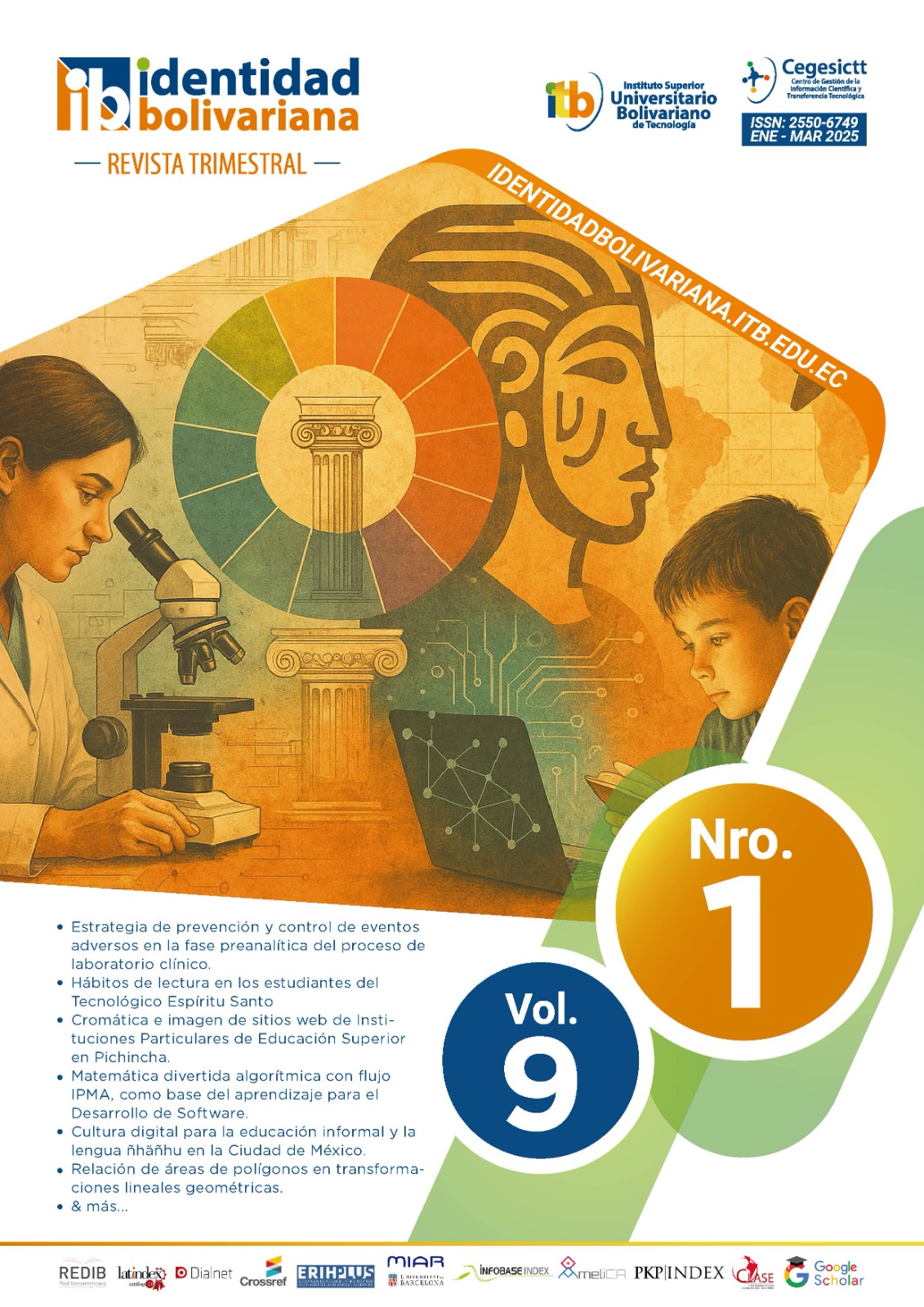Uniform Resource Locators in the Professional Technical Module Accounting Packages
Main Article Content
Abstract
The present work focused on the use of the Uniform Resource Locators (URLs) in the professional technical module Accounting Package of the technical figure Accounting, the objective was to evaluate the implementation of Uniform Resource Locators in the development of the technical competencies of the module. A quasi-experimental quantitative approach was applied, with an explanatory, applied and cross-sectional scope. The population was made up of 30 students in the second year of high school. A sample selection was not made considering that the population is finite. A proposal was applied that was validated by the technical-pedagogical team of the institution who considered it to be relevant, accessible and innovative. A survey and test were prepared and applied considering the indicators proposed in the study. To analyze the incidence of the proposal, Student’s t-test was performed for paired samples. The result statistically showed the significance of this, supporting the effectiveness of the pedagogical strategy. The research concludes by determining that the use of the Uniform Resource Locators as a strategy that promotes access to practical activities of the Accounting Package module evidenced significant improvements in the performance of the students’ technical competencies.
Article Details
Section
How to Cite
References
Barba-Salazar, J., Mendoza-Lino, K., Paz-Zamora, Y., & Barba-López, R. (2024). Ventajas y desventajas de los repositorios digitales en instituciones de Educación Superior. 593 Digital Publisher CEIT, 9(4), 371-382. https://doi.org/10.33386/593dp.2024.4.2522
Castaño, J., Duart, J. M., & Sancho-Vinuesa, T. (2015). Determinantes del uso de Internet para el aprendizaje interactivo: un estudio exploratorio. NAER: New Approaches in Educational Research, 4, 25–34. https://doi.org/10.7821/naer.2015.1.93
Graverán, G. A. (2024). Técnicas de aprendizaje automático para la detección de phishing de URL [Trabajo de fin de máster, Universidad Internacional de Andalucía]. Dspace. https://dspace.unia.es/bitstream/handle/10334/8678/1462_Alonso.pdf
Guerrero, A. J., Mora, A. F., & Godino Fernández, L. A. (2020). Competencia digital docente: Área de información y alfabetización informacional y su influencia con la edad. Academo, 7(1). https://doi.org/10.30545/academo.2020.ene-jun.5
Gutiérrez-Couto, L., & Romero-Pérez, C. (2023). Identificadores digitales aplicables a publicaciones. Derm@ red. Biblioteca del Complexo Hospitalario Universitario de Ferrol. https://dialnet.unirioja.es/servlet/articulo?codigo=9256662
Herrero Díez, N. (2021). La importancia del SEO y dropshipping: análisis de la empresa Printful [Trabajo fin de grado, Universidad de Valladolid]. https://uvadoc.uva.es/bitstream/handle/10324/51916/TFG-J-298.pdf
Maestre, M. M. (2021). Detección de URLs maliciosas por medio de técnicas de aprendizaje automático [Trabajo de grado, Universidad Nacional de Colombia]. https://repositorio.unal.edu.co/handle/unal/1094269813
Marroquín-Soto, C., Padilla, A., & Hernández Sampieri, R. (2023). Fundamentos metodológicos para investigación clínica en estomatología. Estomatología Herediana, 33(1), 6. https://doi.org/10.20453/reh.v33i1.4435
Martínez, F. S., & Martínez, A. G. (2016). Fundamentos del aprendizaje en red desde el conectivismo y la teoría de la actividad. Revista Cubana de Educación Superior, 35(3), 98–112. http://scielo.sld.cu/pdf/rces/v35n3/rces08316.pdf
Morales, J. J., & Contreras, J. E. (2017). Web 2.0: Una herramienta en la enseñanza universitaria. Universidad y Ciencia, 8, 5–14. https://doi.org/10.5377/uyc.v8i13.4534
Raja, A. S., Vinodini, S., & Kavitha, A. (2021). Lexical features based malicious URL detection using machine learning techniques. Materials Today: Proceedings, 47(Part 1), 1–6. https://doi.org/10.1016/j.matpr.2021.04.041
Sevila, P. J. (2021). Página web para favorecer la gestión de la información del sistema de trabajo de la estructura de dirección en Las Tunas [Trabajo de grado, Universidad de Las Tunas]. https://d1wqtxts1xzle7.
cloudfront.net/98622909/PAGINA_WEB_PARA_FAVORECER_LA_GESTION_DE_LA_INFORMACION_DEL_SISTEMA_DE_TRABAJO_DE_LA_ESTRUCTURA_DE_DIRECCION_EN_LAS_TUNAS-libre.pdf
Vera, I. J., Ramírez, L. V., Mendoza, H. D., & Ponce, C. C. (2024). Enseñanza y aprendizaje de la matemática a través de flipped classroom y el uso de WhatsApp. Universidad Laica Eloy Alfaro de Manabí (ULEAM), 9, 79–90. https://doi.org/10.56124/ubm.v5i9.021

